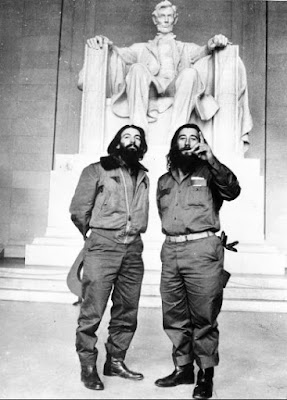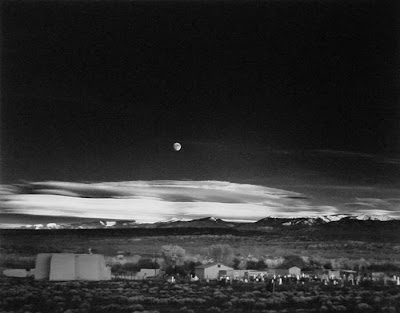Longhairs
I was looking through Osvaldo and Roberto Salas' brilliant photography book "Fidel's Cuba: A Revolution in Pictures" the other day, when a conversation that I had a few years ago with Irv Toefsky, a very well-known DC photography collector, who is unfortunately no longer with us, came to mind.

I don't know which Salas took the above photo, which depicts
Comandante Camilo Cienfuegos on the left, and an unidentified guerrilla, both posing in front of the Lincoln Monument in DC during a visit to DC in 1959.
Popular history anchors the growing of long hair by American youths in the early 60s, and eventually a symbol of rebellion, mainly to the Beatles and their longish haircuts.
But according to this savvy Washingtonian, when the Cubans showed up in DC in 1959 with their long hair, ponytails and huge beards, it caused a sensation in crew-cut America, and especially in Washington, DC.

"We had never seen young people with such long hair," he said to me. "And there was something romantic about the Cubans; their youth, their Revolution and their hair. So we started growing our hair."
Soon afterwards the Cuban Revolution started to go sour and like all revolutions, began devouring its own heroes. Cienfuegos was one of the heroes of the Revolution, and he disappeared at sea in the early 60s. Many claim that he was killed under the direct orders of Raul Castro.
But Salas' beautiful photo remains, as evidence of another revolution, a hair revolution, possibly started by these valiant young men.




















